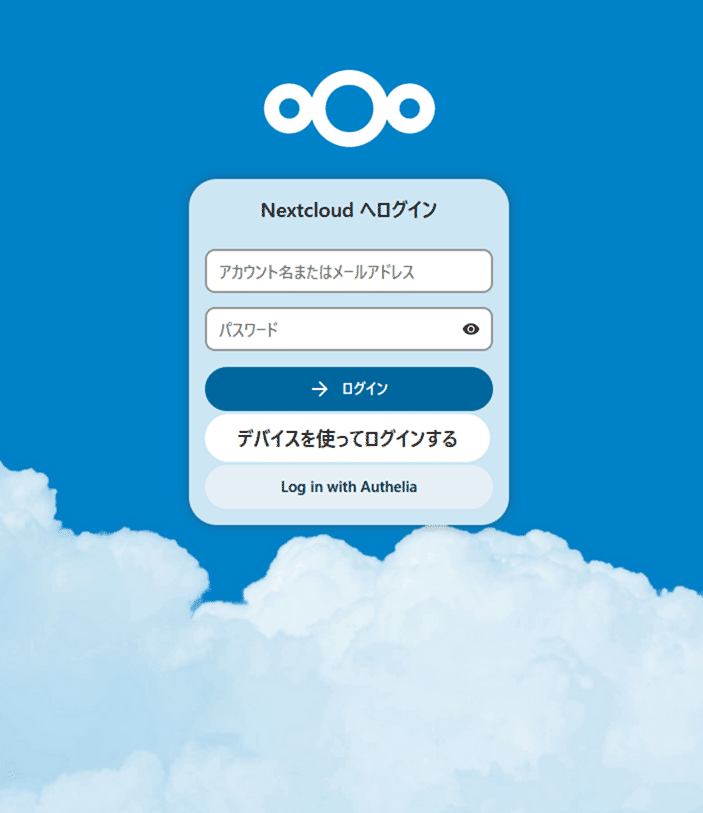Dockerのメモ
自宅サーバーに使用しているコンテナの設定などの備忘録
セルフホスティング万歳!!!!
Ubuntu Core+Snap版DockerとPhoton OS+Dockerで運用中
ホストOSの管理しなくていいの楽でいい
Caddy
設定ファイルの書き方がド簡単なWebサーバー。
LetsEncryptに標準で対応しておりプラグイン次第ではCloudflareとうまく会話していい感じに取りまとめてくれる。
さらにDDNSもできるので自宅の入り口に置いてSNIで振り分ける使い方をを行う。
docker-compose.yml
services: caddy: container_name: caddy image: junklabs/caddy-cloudflare-dynamicdns:alpine restart: always cap_add: - NET_ADMIN ports: - "80:80" - "443:443" - "443:443/udp" env_file: - cloudflare.env environment: - TZ=Asia/Tokyo volumes: - ./caddy/Caddyfile:/etc/caddy/Caddyfile - ./caddy/srv:/srv - ./caddy/data:/data - ./caddy/config:/config networks: default: aliases: - auth.example.net
./caddy/Caddyfile
リバースプロキシのforwardヘッダーなどはデフォルトで設定済みなので本当にこれだけで動くし、Websocketもデフォルトで通る。
毎回コピペするおまじないのようなものがほとんど無いのですんげー快適です!!!!!
- Caddyfile
# The Caddyfile is an easy way to configure your Caddy web server. # # Unless the file starts with a global options block, the first # uncommented line is always the address of your site. # # To use your own domain name (with automatic HTTPS), first make # sure your domain's A/AAAA DNS records are properly pointed to # this machine's public IP, then replace ":80" below with your # domain name. { email {$ACME_EMAIL} # ステージング用に変えてあるので本番ではコメントアウトする acme_ca https://acme-staging-v02.api.letsencrypt.org/directory # DDNS用の設定 dynamic_dns { provider cloudflare {env.CLOUDFLARE_API_TOKEN} domains { example.net @ } ip_source simple_http https://api64.ipify.org versions ipv4 check_interval 24h } } # それぞれのホストはCloudflareでCnameを作っておく *.example.net { tls { dns cloudflare {env.CLOUDFLARE_API_TOKEN} resolvers 1.1.1.1 } @authelia host auth.example.net handle @authelia { reverse_proxy authelia:9091 } @headscale host hs.example.net handle @headscale { reverse_proxy headscale:8080 } @komga host komga.example.net handle @komga { reverse_proxy komga:25600 } # Fallback for otherwise unhandled domains handle { abort } }
コマンドメモ
Caddyfileのフォーマット修正
docker-compose exec caddy caddy fmt /etc/caddy/Caddyfile --overwrite
設定リロード
docker-compose exec caddy caddy reload --config /etc/caddy/Caddyfile --adapter caddyfile
Authelia
リバースプロキシ型の認証システムだがベータ機能としてOpenID Connect(OAuth2)の認証サーバーも兼ねることができるOSS。
Authentik、KeycloakやOpenAM等多機能で無料で使えるOSSは数多くありますが、エンタープライズ級に多機能かつ複雑なものが多いので、認証だけに特化したAutheliaを自宅認証基盤とします。
認証バックエンドとしてローカルのファイル又はActive Directory含むLDAPサーバを使用可能で、データベースはSQLiteかMySQL、postgresqlが使えます。
docker-compose.yml
当該部分だけです。
caddy: ←認証サーバーのフロントエンド networks: default: aliases: - auth.example.net ←OIDCとして使う場合はDocker内部で認証サーバーのhttpsに対して接続できるようにする必要がある authelia: image: authelia/authelia restart: always container_name: authelia volumes: - ./authelia:/config expose: - 9091 healthcheck: disable: true environment: - TZ=Asia/Tokyo - PUID=1000 - PGID=100
./authelia/configuration.yml
以下はActive DirectoryをバックエンドにしつつOIDCとして使うために最低限必要な内容を網羅しています。(秘密鍵は当然除去済みなので適宜生成するように。)
書き上げてチェックするのにきっかり24時間かかった🫠
- configuration.yml
--- theme: light jwt_secret: uuidgenコマンドで出た文字列を2回分くらいつないだやつを入れる default_2fa_method: "" server: host: 0.0.0.0 port: 9091 path: "" enable_pprof: false enable_expvars: false disable_healthcheck: false tls: key: "" certificate: "" client_certificates: [] headers: csp_template: "" log: level: debug format: text file_path: /config/authelia.log telemetry: metrics: enabled: false address: tcp://0.0.0.0:9959 totp: disable: false issuer: example.net algorithm: sha1 digits: 6 period: 30 skew: 1 secret_size: 32 webauthn: disable: false timeout: 60s display_name: Example.net Atuh Server attestation_conveyance_preference: indirect user_verification: preferred ntp: address: time.cloudflare.com:123 version: 4 max_desync: 3s disable_startup_check: false disable_failure: false authentication_backend: password_reset: disable: true custom_url: "" refresh_interval: 5m ldap: implementation: activedirectory url: ldaps://192.168.100.200 tls: skip_verify: true base_dn: dc=example,dc=net user: CN=binduser,CN=Users,dc=example,dc=net password: くそしてねろ password_policy: standard: enabled: false min_length: 8 max_length: 0 require_uppercase: true require_lowercase: true require_number: true require_special: true zxcvbn: enabled: false min_score: 3 access_control: default_policy: two_factor session: name: authelia_session domain: example.net same_site: lax secret: insecure_session_secret expiration: 1h inactivity: 5m remember_me_duration: 1M regulation: max_retries: 3 find_time: 2m ban_time: 5m storage: encryption_key: uuidgenコマンドで出た文字列を3回分くらいつないだやつを入れる local: path: /config/db.sqlite3 notifier: disable_startup_check: false filesystem: filename: /config/notification.txt identity_providers: oidc: issuer_private_key: | -----BEGIN PRIVATE KEY----- 丶丶丶丶丶丶温幽籬櫑櫑櫑櫑櫑幽厶雌櫑幽岱垉厶丶丶丶丶丶丶 丶丶丶当櫑欟欟櫑欟欟欟欟欟欟欟櫑欟櫑櫑翻麗謝叱丶丶丶丶丶 丶丶丶覇竃櫑櫑欟欟欟欟欟欟欟櫑欟櫑欟欟欟層櫑艶旨丶丶丶丶 丶丶丶層櫑欟欟欟欟欟欟欟欟欟嬲竃嬲竃竃欟櫑竃覇覇丶丶丶丶 丶丶丶灑嬲欟欟嬲嬲嬲嬲嬲鬻辧卻眉贈幗層欟欟櫑竃櫑廴丶丶丶 丶勹僧層櫑欟鬱綴綴局悦局局拇狐綴綴鋼幗幗竃欟竃櫑廬丶丶丶 丶湘嬲嬲櫑欟辧綴仰災欠災沼卻局綴綴掴綱幗櫑嬲幗櫑廳丶丶丶 丶勺覇欟櫑鬱即卻仰災災沿己卻凹句郊塀獅幗櫑櫑欟櫑勳丶丶丶 丶丶濁幗欟圓扼卻仰災災沱災可沼笳鏑櫑雌彌幗櫑欟櫑欟眦丶丶 丶丶層櫑櫑鬱狐猖旛幽迫己旧卻獅嬲嬲幗幗幗幗櫑欟櫑覇眇丶丶 丶丶櫑欟欟鬱掴嚴憫笥局仰可局綮当踏審綱燒幗層欟櫑欟廴丶丶 丶丶層覇櫑欟即尚旛籬籬枢叫猖鬱幣憫牒憫椹禰幗欟欟欟杉丶丶 丶丶層欟櫑欟抓儕凹沼珱卻旧塀簡紹笳綴僻綴掴幗欟欟鬱丶丶丶 丶丶丶層櫑欟仰卻旧突句己沒笵綴囹卻仰加仰塀禰層欟欟企丶丶 丶丶丶瀰欟欟仰旧句災沼卻卻卻獅雌扼卻卻狐綴綱層欟欟歡丶丶 丶丶丶湧欟欟紀凹句巡卻仰似局綴獅雌卻卻綴掴綱幗嬲覇黙丶丶 丶丶丶丶層眼眼句旧卻卻鍵輔禰層嬲幗囹卻綴掴囃幗櫑歉丶丶丶 丶丶丶丶勺龝圄句沒卻卻卻卻沺禰幗幗雌歳狐掴囃彌欟默丶丶丶 丶丶丶丶丶丶丶句沒卻笳僻把洞雄櫺櫑顧綴鋼囃讃幗嚶丶丶丶丶 丶丶丶丶丶丶丶勺句卻譲嬲霸嫻嬲幗難掴獅幗幗幗嬲艶二丶丶丶 丶丶丶丶丶丶丶丶句旧卻卻綴掴燒辧辧讃幗幗幗幗杉欟欟幽丶丶 丶丶丶丶丶丶丶丶丶刈皿狐卻仰瀉囃雌幗幗幗覇歉勺欟欟欟櫑幽 丶丶丶丶丶丶丶丶丶丶勺牋綴燒雌幗幗幗幗幗鬱三儲欟欟欟櫑櫑 丶丶丶丶丶丶丶丶二旛櫑封贈簡幗難幗幗櫑鬱災三灑欟欟欟櫑欟 丶丶丶丶丶丶澁櫑櫑櫑櫑歡兆卻塀綱幗幗黙冖三消欟欟欟欟欟覇 丶丶丶澁籬櫑櫑櫑櫑櫑櫑置丶筍綴綴諜冖丶丶三瀰欟欟欟欟欟覇 丶誕櫑櫑櫑櫑櫑櫑櫑欟櫑置丶勺朔薪丶丶丶丶勺欟欟欟欟欟櫑櫑 灑櫑櫑櫑櫑櫑櫑櫑櫑欟欟置丶俎幗雛止丶丶丶儲欟欟欟欟欟櫑櫑 欟櫑櫑櫑櫑櫑櫑櫑櫑櫑欟置丶欟攜層櫑幽丶丶灑欟欟欟欟欟櫑櫑 -----END PRIVATE KEY----- access_token_lifespan: 30m authorize_code_lifespan: 1m id_token_lifespan: 30m refresh_token_lifespan: 90m enable_client_debug_messages: false enforce_pkce: public_clients_only cors: endpoints: - authorization - token - revocation - introspection - userinfo allowed_origins: - https://auth.example.net allowed_origins_from_client_redirect_uris: true clients: - id: komga description: Komga secret: ちゃんと公式ドキュメントを読んで生成しろよ(https://www.authelia.com/integration/openid-connect/frequently-asked-questions/#how-do-i-generate-client-secrets) public: false authorization_policy: two_factor redirect_uris: - https://books.example.net/login/oauth2/code/authelia scopes: - openid - profile - email grant_types: - authorization_code userinfo_signing_algorithm: none - id: headscale description: Headscale secret: (・∀・)イジョウジサクジエンデシタ public: false authorization_policy: two_factor redirect_uris: - https://ts.example.net:443/oidc/callback ←Headscaleの設定に合わせて:443を付けないとこけます scopes: - openid - profile - email grant_types: - authorization_code userinfo_signing_algorithm: none
コマンドメモ
Digestをautheliaのconfigに書き、Random PasswordをOauthする側に設定する
user@photon-machine [ ~/docker/container ]$ docker-compose run authelia authelia crypto hash generate pbkdf2 --variant sha512 --random --random.length 72 --random.charset rfc3986 Random Password: 1EmWSMJZs1DhXs3RぬるぽR1gJNFrUi7Wv4mBrbZtvlWaK15thnEv2dznfNizsYF90SA Digest: $pbkdf2-sha512$310000$wRy8rDKN1VM5Wガッog$S62QcY1GGTz2LodLNDIZDZi/DU4D1WChxcM8vWXXE93NhVlec6LUdmZZAL10/j.hXJbnw8fH8OvYV6c5eVk1YA m
OIDCの構成URLと仕様
大体ログインページ(https://auth.example.com/)を指定すれば勝手に下記を引いて通るが手動で設定するよう求められた場合やなんかうまくいかない時に確認する
user@photon-machine [ ~/docker/container ]$ curl https://auth.example.net/.well-known/openid-configuration | python -m json.tool { "issuer": "https://auth.example.net", "jwks_uri": "https://auth.example.net/jwks.json", "authorization_endpoint": "https://auth.example.net/api/oidc/authorization", "token_endpoint": "https://auth.example.net/api/oidc/token", "subject_types_supported": [ "public" ], "response_types_supported": [ "code", "token", "id_token", "code token", "code id_token", "token id_token", "code token id_token", "none" ], "response_modes_supported": [ "form_post", "query", "fragment" ], "scopes_supported": [ "offline_access", "openid", "profile", "groups", "email" ], "claims_supported": [ "amr", "aud", "azp", "client_id", "exp", "iat", "iss", "jti", "rat", "sub", "auth_time", "nonce", "email", "email_verified", "alt_emails", "groups", "preferred_username", "name" ], "introspection_endpoint": "https://auth.example.net/api/oidc/introspection", "revocation_endpoint": "https://auth.example.net/api/oidc/revocation", "code_challenge_methods_supported": [ "S256" ], "require_pushed_authorization_requests": false, "userinfo_endpoint": "https://auth.example.net/api/oidc/userinfo", "id_token_signing_alg_values_supported": [ "RS256" ], "userinfo_signing_alg_values_supported": [ "none", "RS256" ], "request_object_signing_alg_values_supported": [ "none", "RS256" ], "request_uri_parameter_supported": false, "require_request_uri_registration": false, "claims_parameter_supported": false, "frontchannel_logout_supported": false, "frontchannel_logout_session_supported": false, "backchannel_logout_supported": false, "backchannel_logout_session_supported": false }
Headscale
iOSのTailscaleアプリがサーバーの変更に対応したので本家TailscaleからHeadscaleに移行する。お目溢しで多数のデバイス登録させてもらってるのも申し訳なくて
下記の設定でAndroidのTailscaleアプリからAutheliaで認証することができるのは確認した。
docker-compose.yaml
headscale: container_name: headscale image: headscale/headscale:0.22.0 volumes: - ./headscale/config:/etc/headscale/ expose: - 8080 ports: # metrics test /metrics - 9090:9090 command: headscale serve restart: unless-stopped
./headscale/config.yaml
- subnet経由で外から自宅サーバーの経由の名前を引いてアクセスするための設定も込みです
- /varに書き込めないので動的に作成されるファイルの場所を/etc/headscale/(ボリューム)に変更しています。
- config.yaml
--- server_url: https://hs.example.net:443 listen_addr: 0.0.0.0:8080 metrics_listen_addr: 0.0.0.0:9090 grpc_listen_addr: 127.0.0.1:50443 grpc_allow_insecure: false private_key_path: /etc/headscale/private.key noise: private_key_path: /etc/headscale/noise_private.key ip_prefixes: - fd7a:115c:a1e0::/48 - 100.64.0.0/10 derp: server: enabled: false region_id: 999 region_code: headscale region_name: Headscale Embedded DERP stun_listen_addr: 0.0.0.0:3478 private_key_path: /etc/headscale/derp_server_private.key urls: - https://controlplane.tailscale.com/derpmap/default paths: [] auto_update_enabled: true update_frequency: 24h disable_check_updates: false ephemeral_node_inactivity_timeout: 30m node_update_check_interval: 10s db_type: sqlite3 db_path: /etc/headscale/db.sqlite acme_url: https://acme-v02.api.letsencrypt.org/directory acme_email: "" tls_letsencrypt_hostname: "" tls_letsencrypt_cache_dir: /var/lib/headscale/cache tls_letsencrypt_challenge_type: HTTP-01 tls_letsencrypt_listen: :http tls_cert_path: "" tls_key_path: "" log: format: text level: info acl_policy_path: "" dns_config: override_local_dns: true nameservers: - 192.168.100.211 - 192.168.100.212 domains: [] magic_dns: true base_domain: example.com unix_socket: /tmp/headscale.sock unix_socket_permission: "0770" oidc: only_start_if_oidc_is_available: true issuer: https://auth.example.net ←最後の/をなしにしないと通らない client_id: headscale client_secret: ピュー ( ^^ ) <これからも山崎を応援して下さいね(^^)。 scope: - openid - profile - email logtail: enabled: false randomize_client_port: false
コマンドメモ
ユーザー一覧表示
docker-compose exec headscale headscale users list
ノード一覧表示
docker-compose exec headscale headscale nodes lis
ルート一覧表示
docker-compose exec headscale headscale routes list
ルートを承認
docker-compose exec headscale headscale routes enable -r 1
外部とブリッジされたネットワークを作成する(現行)
AdGuard等多数のポートを開放するコンテナに実ネットワークのIPアドレスを割り当てるために行う設定。
このままではホスト↔コンテナの通信がkernelで遮断されるがこれは仕様。
ホストに別途macvlanデバイスを作成し、そちらにIPアドレスを割り当てるとでこの制限を回避できるが、Dockerと関係がないので別の記事
引数の–gateway は作成したデフォルトゲートウェイのアドレスを指定する。bridgeと異なるので注意
docker network create -d macvlan \ --subnet=192.168.100.0/24 \ --gateway=192.168.100.1 \ -o parent=eth0 \ external-network
外部とブリッジされたネットワークを作成する(旧)
この方法をやると、不具合が発生することが判明したので上の段落のmacvlanドライバに順次切り替える。
- –ports 指定が効かず、他のホストからアクセスできない
- docker-composeて自動的に作られるネットワークが勝手に隔離扱いになって実ネットワークに繋いていないコンテナから外に出られない。(セキュリティ的に望ましい動作たが、リバースプロキシの裏に他所と通信するフロントエンドがいるので困る)
元ネタ Qiita 外部ネットワーク側からDockerコンテナに通信できる環境を作成する
自分で事前に作成したブリッジに接続するように指定する。
docker-compose等で作成したネットワークにコンテナをつないであげれば外からコンテナに直接アクセスできるようになる。
引数の–gateway は作成したブリッジのアドレスを指定する。ルーターのアドレスなどを指定するとブリッジが壊れて締め出される羽目になる。
もしそうなったらコンソールから docker network rm external-network で消してから再生成して再起動する。
docker network create \ --driver=bridge \ --subnet 192.168.100.0/24 \ --gateway 192.168.100.223 \ --opt "com.docker.network.bridge.name"="br0" \ external-network
